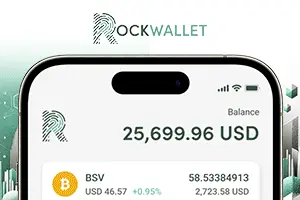|
Getting your Trinity Audio player ready...
|
Fintech platform MobiKwik has introduced a full version of the country’s central bank digital currency (CBDC), or the e-rupee, in collaboration with the Reserve Bank of India (RBI), and Yes Bank, a commercial lender. Simultaneously, the fintech platform Cred is going to provide its e-rupee wallet to a limited group of users, with Yes Bank overseeing the issuance of e-rupee tokens in the wallets.
MobiKwik claims to be the first digital wallet to launch a full e-rupee wallet, which is now available to all its Android users. The e-rupee wallet allows users to transfer funds to other e-rupee wallets or traditional bank accounts using Unified Payments Interface (UPI), supporting both peer-to-peer (P2P) and peer-to-merchant (P2M) transactions. Users can, for instance, scan a UPI QR code and make payments using the e-rupee, which is fully interoperable with UPI.
“We expect that CBDC will make the Indian rupee digital and further expand the digital economy. E-rupee transfers can be made to anyone with an e-rupee wallet or UPI ID. Our goal is to drive the adoption of e-rupee in India and move towards a less cash economy,” Bipin Preet Singh, co-founder of MobiKwik, said.
Mobikwik’s e-rupee wallet currently has a daily transaction limit of Rs 50,000 ($576) and per transaction limit of Rs 10,000 ($115).
On the other hand, fintech platform Cred will reportedly offer its e-rupee wallet to a select group of users, with Yes Bank managing the issuance of e-rupee tokens in the wallets.
While MobiKwik has launched a full version of its e-rupee wallet for all Android users, Cred has introduced a beta version for a limited group. Both platforms are partnering with Yes Bank to facilitate these services.
The announcements come after the RBI allowed non-banking payment operators to offer e-rupee (e₹) transactions. Before that, the RBI allowed only banks to provide access to digital currency. The move was expected to test how resilient India’s CBDC platform is in handling multi-channel transactions.
“CBDC pilots in the retail and wholesale segments are underway with more use-cases and more participating banks. Continuing with this approach, it is proposed to make CBDC-retail accessible to a broader segment of users in a sustained manner, by enabling non-bank payment system operators to offer CBDC wallet,” RBI said in a statement on developmental and regulatory policies.
“This is expected to enhance access and expand choices available to users apart from testing the resiliency of the CBDC platform to handle multi-channel transactions. Necessary changes will be made to the system to facilitate this,” the statement said.
The RBI started its first digital rupee pilot in the wholesale segment on November 1, 2022, while the retail digital rupee pilot began on December 1, 2022.
India’s blockchain-based digital rupee will likely witness more cross-border transactions in 2025 while exploring programmable money use cases. The RBI also integrates the e-rupee with existing digital payment systems to drive adoption.
The move comes at a time when the central bank of the world’s largest democracy has been struggling to find stronger adoption in the country’s burgeoning digital payment landscape. This is primarily because RBI has been simultaneously pushing to popularize India’s flagship Unified Payments Interface (UPI), a global success story and an example of effective Digital Public Infrastructure (DPI).
“In India, the digital rupee pilot has yet to achieve mainstream adoption among India’s vast population, especially in the presence of the widely adopted Unified Payments Interface (UPI). As of May 2024, the e-rupee in circulation stood at 3.23 billion rupees, up from 1 billion rupees in December 2023. However, this remains a small fraction of the 35.4 trillion rupees in banknotes currently in circulation,” stated an International Monetary Fund (IMF) report.
Watch: Finding ways to use CBDC outside of digital currencies

 09-17-2025
09-17-2025 





